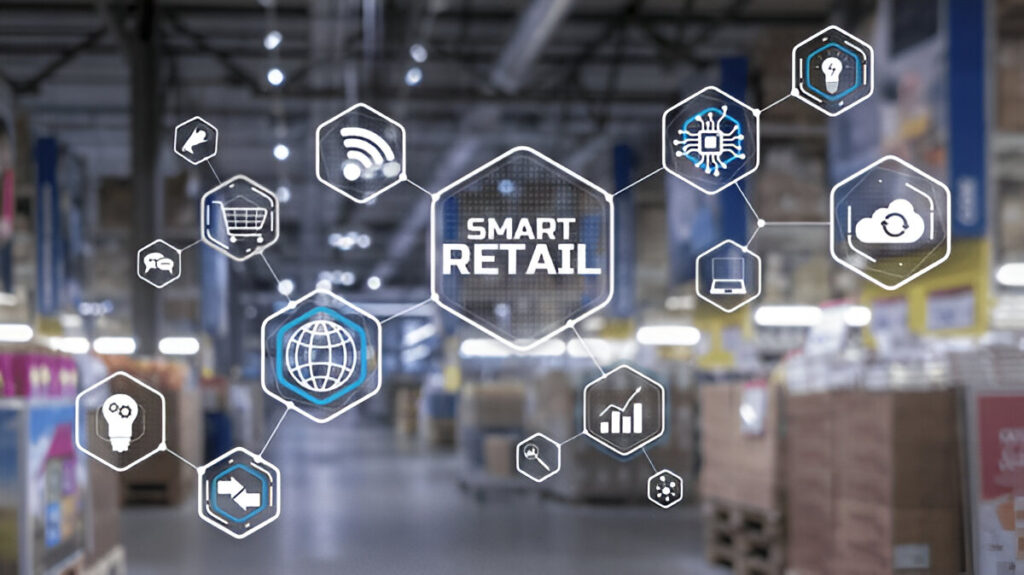Digital Transformation in Alcohol Retail: Integrating In-Store and Online Analytics

The beverage alcohol industry is witnessing a significant shift, driven by the rise of e-commerce, changing customer preferences, and advancements in technology. To stay ahead in this competitive landscape, retailers are now embracing digital transformation, integrating in-store and online analytics to create seamless customer experiences and optimize operations. In this guide, we’ll explore how this digital transformation in alcohol retail is taking shape, the benefits it brings to alcohol retailers, and why integrating analytics is key to staying competitive.
Why Digital Transformation in Alcohol Retail matters
For years, alcohol retail has relied on traditional methods, focusing heavily on in-store sales and customer interactions. However, the advent of digital technology is reshaping how retailers operate. As customers shift towards online platforms, retailers must adapt by merging in-store experiences with digital convenience. Here’s why digital transformation is crucial for the alcohol retail industry:
1. Changing Consumer Behavior: Customers today expect a seamless shopping experience across multiple channels—whether they’re browsing online, ordering for delivery, or visiting a physical store. The pandemic accelerated this shift, and it’s now the new norm.
2. Enhanced Decision-Making with Data: The integration of analytics allows retailers to gain insights into customer behavior, preferences, and buying patterns. This data-driven approach enables better decision-making, targeted marketing, and effective inventory management.
3. Omnichannel Shopping Experience: Digital transformation bridges the gap between online and offline channels, creating a unified shopping experience. This allows customers to explore products online, check availability in-store, and pick up their orders seamlessly.

Leveraging In-Store Analytics: A Game-Changer for Alcohol Retailers
In-store analytics is the backbone of digital transformation for brick-and-mortar stores. By using advanced technology, retailers can gather valuable data on customer behavior and optimize in-store operations. Here’s how in-store analytics is transforming alcohol retail:
1. Understanding Customer Behavior
In-store analytics tools track customer movements, product interactions, and browsing patterns within the store. This data helps retailers understand which sections of the store get the most traffic, which products are most popular, and where customers spend the most time. With this information, stores can:
· Optimize store layouts to enhance product visibility.
· Arrange promotional displays in high-traffic areas.
· Identify underperforming sections and make necessary adjustments.
2. Optimizing Inventory Management
Inventory management is critical in alcohol retail, where seasonality and trends can significantly impact sales. In-store analytics allows retailers to monitor stock levels in real-time, track product performance, and predict demand based on historical data. This leads to:
· Reduced risk of overstock or stockouts.
· Improved restocking processes with automated alerts.
· Better anticipation of seasonal peaks and product trends.
3. Enhancing the In-Store Experience
In-store analytics enables retailers to deliver a more personalized shopping experience. By analyzing customer behavior, stores can offer tailored product recommendations, create targeted promotions, and even adjust pricing dynamically based on demand. These strategies can significantly increase customer satisfaction and drive loyalty.
The Power of Online Analytics: Boosting E-Commerce Success
Online analytics is crucial for optimizing e-commerce in the alcohol retail industry. Here’s how it’s making an impact:
- Personalized Marketing Campaigns: Retailers track customer behavior—such as product views and purchases—to tailor marketing. They can:
· Send targeted emails based on browsing history.
· Use retargeting ads to recover abandoned carts.
· Recommend personalized products to boost order value.
2. Enhancing User Experience: Analytics provides insights into website performance, guiding improvements to:
· Optimize navigation and reduce bounce rates.
· Increase mobile responsiveness.
· Upgrade product pages with detailed content.
3. Tracking Sales and Metrics: Online tools report key metrics like conversion rates and average order value, enabling retailers to:
· Spot top-selling products.
· Adjust pricing according to trends.
· Measure the success of marketing in real-time.

Integrating In-Store and Online Analytics: A Unified Approach
The most significant opportunity for alcohol retailers lies in integrating in-store and online analytics, creating a seamless omnichannel experience. This integration offers several key advantages:
1. Consistent Customer Journey
By combining in-store and online data, retailers can provide a consistent customer journey. For example, customers can browse products online, check if they’re available in-store, and reserve them for pick-up. This level of convenience boosts customer satisfaction and loyalty.
2. Cross-Channel Insights
Integrating analytics enables retailers to track customer behavior across channels, gaining a holistic view of their preferences and habits. This helps in identifying the most effective sales channels, optimizing marketing strategies, and tailoring promotions for different customer segments.
3. Streamlined Operations and Better Decision-Making
A unified analytics approach simplifies decision-making by providing a single source of truth. Retailers can access comprehensive reports on sales, inventory, customer preferences, and marketing performance—all in one place. This leads to faster decision-making, reduced costs, and more efficient operations.
The Future of Alcohol Retail is Data-Driven
The alcohol retail industry is evolving, and digital transformation is no longer optional—it’s a necessity. By integrating in-store and online analytics, retailers can create a cohesive shopping experience that meets the needs of today’s customers. The benefits are clear: improved inventory management, personalized marketing, enhanced customer experiences, and streamlined operations.
Conclusion
As technology continues to evolve, the future of alcohol retail will be shaped by those who can effectively harness the power of data. If you’re interested in learning more about how CRM solutions tailored to the alcohol beverage industry can elevate your retail business, visit Analyticsmart for innovative solutions that drive efficiency and customer engagement in the alcohol retail world.
Have A Question?
Learn how Analyticsmart can elevate your retail performance with data-driven insights and customized solutions.
Contact Sales
Have a question or comment? Submit your message through our contact form and a member of our team will get back to you within 24 hours.
Marketing Head | Analyticsmart
Unlock Your Retail Potential With Us
